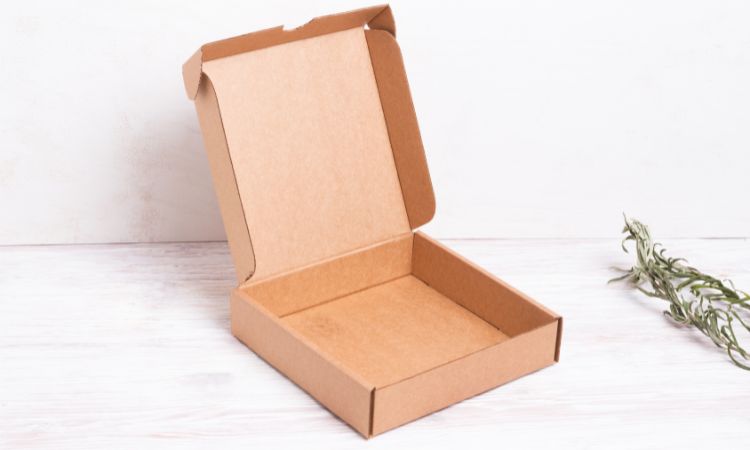The global folding boxboard market size is expected to grow at a CAGR of 5.8% in the forecast period of 2024-2032. This significant growth is driven by the rising demand for sustainable packaging solutions and the increasing popularity of e-commerce. However, with this growth comes a responsibility to minimize the environmental impact of this industry. This blog post will explore the current state of sustainability practices in the folding boxboard market, focusing on recycling, environmental concerns, and future trends.
I. Introduction
The packaging industry plays a crucial role in protecting and transporting goods, but it also generates significant environmental waste. Consumers are increasingly demanding sustainable practices from brands, and folding boxboard offers a promising solution. Folding boxboard is a paper-based material known for its versatility, printability, and recyclability. However, ensuring a truly sustainable folding boxboard market requires addressing the environmental impact throughout its lifecycle.
II. Recycling in the Folding Boxboard Market
Recycling plays a vital role in making the folding boxboard market more sustainable. Let’s delve into the process and its benefits:
-
Recycling Process for Folding Boxboard: The recycling process for folding boxboard involves collection, sorting, pulping, and remanufacturing. Used boxes are collected, separated from contaminants, and pulped into a slurry. This slurry is then cleaned, refined, and transformed into new folding boxboard.
-
Benefits of Recycling Folding Boxboard: Recycling offers numerous advantages:
- Reduced reliance on virgin wood fibers, preserving forests.
- Lower energy consumption compared to producing virgin board.
- Decreased landfill waste, minimizing environmental pollution.
- Creation of a closed-loop system, promoting resource efficiency.
-
Challenges and Barriers to Recycling: Despite the benefits, recycling folding boxboard faces challenges:
- Contamination with food residue or other materials can hinder the process.
- Consumers need clear labeling and education on proper boxboard recycling.
- Limited infrastructure for collecting and processing folding boxboard in some regions.
III. Environmental Impact of Folding Boxboard
Understanding the environmental impact of folding boxboard throughout its lifecycle is crucial for improvement:
-
Raw Material Sourcing: Sustainable Forestry Practices: Sourcing wood pulp from sustainably managed forests is essential. Certifications like FSC (Forest Stewardship Council) and PEFC (Programme for the Endorsement of Forest Certification) ensure responsible forestry practices and minimize deforestation.
-
Energy Consumption in Manufacturing: Folding boxboard production requires energy. Manufacturers can adopt energy-efficient technologies and utilize renewable energy sources to minimize their environmental footprint.
-
Waste Management and Disposal: Production scraps and unusable materials should be properly managed. Composting or recycling these materials can significantly reduce waste going to landfills.
Click here to check our other reports: https://www.expertmarketresearch.com.au/
IV. Sustainable Practices in Folding Boxboard Production
Folding boxboard manufacturers can implement various strategies to promote sustainability:
-
Use of Recycled Content in Manufacturing: Increasing the percentage of recycled content in folding boxboard reduces reliance on virgin fibers. This not only benefits the environment but can also enhance a company’s sustainability image.
-
Energy-Efficient Manufacturing Processes: Investing in energy-efficient equipment and optimizing production processes can significantly reduce energy consumption. Utilizing renewable energy sources like solar or wind power further minimizes the environmental impact.
-
Minimizing Water Usage and Emissions: Optimizing water usage in manufacturing processes and implementing air pollution control measures are crucial for environmental responsibility.
V. Certification and Standards for Sustainable Folding Boxboard
Certifications and standards provide a framework for ensuring sustainable practices:
-
Overview of Certifications: Certifications like FSC, PEFC, and SFI (Sustainable Forestry Initiative) verify that the wood pulp used in folding boxboard originates from sustainably managed forests. These certifications offer transparency and credibility to consumers.
-
Compliance with Regulations and Standards: Folding boxboard manufacturers need to comply with regulations regarding recyclable content, compostability, and sustainable forestry practices. This ensures responsible production and minimizes environmental impact.
VI. Case Studies of Sustainable Folding Boxboard Packaging
Several companies are leading the way in sustainable folding boxboard packaging:
-
Examples of Sustainable Practices: Companies like IKEA and Unilever have adopted folding boxboard packaging with high recycled content and implemented sustainable forestry practices. They also invest in educating consumers about proper boxboard recycling.
-
Success Stories: These companies have successfully reduced their environmental footprint while maintaining product quality and brand image. Their success stories inspire others in the industry to adopt sustainable practices.
VII. Future Outlook for Sustainable Folding Boxboard
The folding boxboard market is constantly evolving, with a focus on increased sustainability:
-
Emerging Trends in Sustainable Packaging: Emerging trends include the use of bio-based materials like bamboo pulp, development of home-compostable boxboard options, and exploration of innovative coatings that minimize environmental impact.
-
Potential Innovations in Folding Boxboard Technology: Technological advancements in areas like material science and recycling processes can further enhance the sustainability of folding boxboard. Research into improving the recyclability of complex packaging structures with coatings and laminations is also ongoing.

